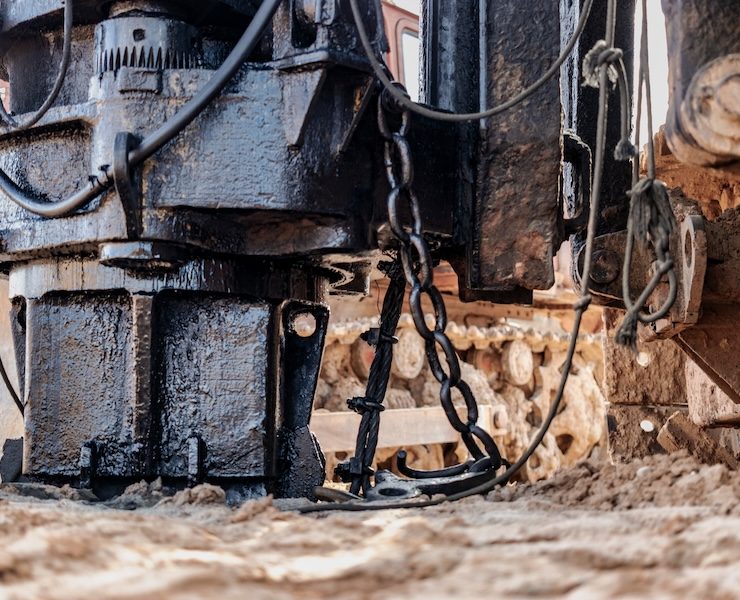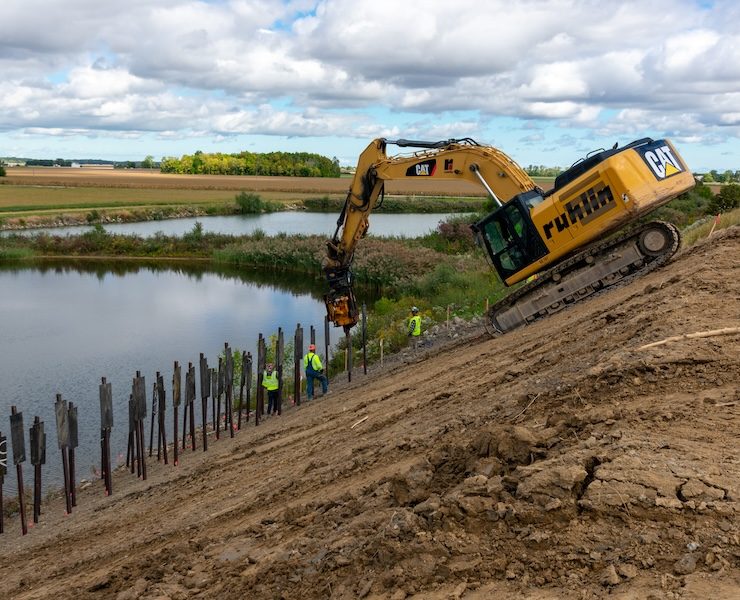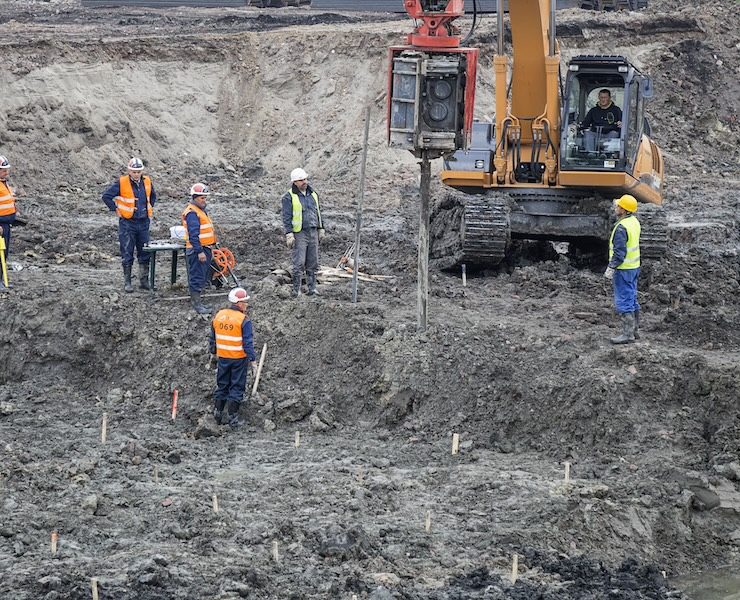Formerly Mined Land In Florida Can Be Be Hazardous to Developers

by Larry Madrid, PE, D.GE, F.ASCE
Lands that were formerly mined for phosphate can look pretty good, but have very soft conditions just below the ground surface. We have found that the soil is generally one of three major groups:
- CLAYEY SAND (the result of mixing of the surficial sands with clayey soil from below the ground but above the ore body; also called overburden);
- SAND that was mechanically and chemically separated from the phosphate pebble, also called sand tailings because it comes out at the tail end of the processing; or
- WASTE PHOSPHATIC CLAY also known as “slimes”. This is the fine grained material that was in the matrix of soil that included the phosphate pebble before it was separated from the sand and the clay.
Each of these materials presents its own difficulties. The clayey sand is usually much looser/softer than the unmined sand or clay would have been, because it was picked up by a dragline, moved out of the way of the excavation, and dumped from 20 to 40 feet in the air. Mining companies rarely make the effort try to compact this soil after mining, so it is very loose to loose. Sand tailings, on the other hand, are usually hydraulically placed; this means that they are transported from the mine site to a disposal area, usually in a water slurry so it can be pumped miles away. When they deposit this material, the water runs out and is recycled, but the sand was placed in virtually the loosest state it could be: under water, or in geotech-speak, “effective stress conditions”.
 But the worst condition is when waste clay is encountered within a formerly mined site. Waste phosphatic clay is the clay that was in the ground, below the surficial sands, and mixed with phosphate and sand. To transport the phosphate-rick ore back to the beneficiation plant, vast amounts of water are jetted to break the phosphate bearing sandy clay into small enough clods that it can be pumped to the plant. The addition of so much water transforms the clay from a solid to a murky fluid, which is then sent to a settling area, or just put back into the mine cut area. Clay settling areas generally require above-grade impoundments, because with the addition of the water, the volume of the clay is actually higher than the volume of the unmined land including the clay, sand and phosphate pebble combined. It is extremely soft, and because the sand and phosphate have been removed it is almost pure clay with a much higher plasticity than natural, unmined clay. As a result, it is difficult to dewater, extremely soft and therefore weak, and highly compressible when loaded. Not exactly the ideal foundation soil!
But the worst condition is when waste clay is encountered within a formerly mined site. Waste phosphatic clay is the clay that was in the ground, below the surficial sands, and mixed with phosphate and sand. To transport the phosphate-rick ore back to the beneficiation plant, vast amounts of water are jetted to break the phosphate bearing sandy clay into small enough clods that it can be pumped to the plant. The addition of so much water transforms the clay from a solid to a murky fluid, which is then sent to a settling area, or just put back into the mine cut area. Clay settling areas generally require above-grade impoundments, because with the addition of the water, the volume of the clay is actually higher than the volume of the unmined land including the clay, sand and phosphate pebble combined. It is extremely soft, and because the sand and phosphate have been removed it is almost pure clay with a much higher plasticity than natural, unmined clay. As a result, it is difficult to dewater, extremely soft and therefore weak, and highly compressible when loaded. Not exactly the ideal foundation soil!
The attached figure shows what can happen when even a wide track bulldozer, specifically designed to have low ground pressure, encounters waste phosphatic clay. The dozer shears the clay at the tracks, and the tracks simply spin with no forward motion. The top crust of clay, which was dried out a little more by the sun and is stronger than the soil beneath it, cannot hold the heavy equipment and fails in shear, which drops the bulldozer into the softer material below. Unless the equipment is removed quickly, it can sink to the bottom of the clay deposit, which could be as deep as 40 feet in some clay settling areas.
The trick is to dewater the clay first so it is stiffer, stronger and has higher shear strength, at least enough to support lightweight vehicles. It is part of a lengthy process called land reclamation. However, even after reclamation, the land may not be suitable for typical development (housing, shopping centers, roads, etc.) without significant additional stabilization techniques to manage and minimize settlement and assure that the ground is strong enough to support the intended loads. Madrid Engineering excels at taking mined land and making it useful by effectively utilizing geotechnical materials, stabilization methods, and proper analysis and design. Our engineers and geologists have decades of experience in dealing with phosphate mined land, by virtue of our offices being located near the “Phosphate Capital of the World”, i.e., central Florida. Let us work with you on your next project.

















